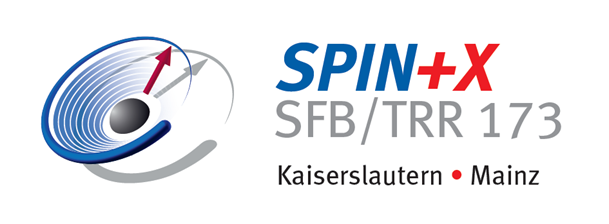CURRENT FUNDED PROJECTS

ERC Starting Grant CoSpiN: Coherent Spintronic Networks for Neuromorphic Computing

Neuromorphic computing uses networks of artificial neurons highly interconnected by artificial synapses to perform vast data processing tasks with unmatched efficiency, as needed, for instance, for pattern recognition or autonomous driving tasks. The synaptic connections play a paramount role to create better hardware realizations of these networks. However, it is very complex to realize large interconnectivity by electronic circuity. CoSpiN overcomes this connectivity constraint by using the eigen-excitations of the magnetic system – the spin waves – to connect state-of-the-art artificial neurons based on spintronic auto-oscillators.
CoSpiN’s main goal is to create and experimentally validate innovative physical building blocks for a novel nano-scaled, all-spintronic network structure which incorporates all necessary properties for neuromorphic computing including high nonlinearity, interconnectivity and reprogrammability.
By design, CoSpiN works at the boundary between oscillator-based computing and wave-based computing. It uses interference, frequency-multiplexing, and time-modulation techniques as well as spin-wave amplification to significantly increase the connectivity between neurons. Reprogramming of the network is implemented by a direct physical link to magnetic memory solutions as well as by reconfiguring spin-wave circuits. By using coherent wave interference and nonlinear wave interaction, CoSpiN paves the way for novel coupling phenomena for complex artificial neural networks far beyond the state-of-the-art of current hardware realizations.
Using cutting-edge micromagnetic simulations enhanced by inverse design methods, the artificial networks will be designed and tested prior to their nano-fabrication. Experimental investigations will be mainly carried out using micro-focused Brillouin light scattering. This allows for local investigation of the individual neurons and synapses, and significantly simplifies the interpretation of the network dynamics.


We are proud to coordinate the M&MEMS project which aims at combining the tunability of magnonic systems with the power efficiency and the agility of micro-electro-mechanical systems (MEMS), thus empowering a new generation of devices for radio-frequency (RF) communication and microwave signal processing. The consortium brings together 7 EU research groups and 2 industrial partners with a broad range of leading expertise in the fields of magnonics, MEMS, material science and RF electronics. We will first optimize the individual magnonic and MEMS building blocks by simulations and experiments. Then MEMS actuator with permanent magnets will be integrated in standalone PCB demonstrators for the first time. Such M&MEMS chip, which have the capacity to disrupt the wafer-scale based hardware industries, will serve as the cornerstones of a new technology platform bringing spin-wave devices to a new level in terms of energy efficiency, agility, reconfigurability and footprint. Two analog RF electronic functions have been identified by our end-users: an agile-filter with potential application in the field of 5G communication and beyond (NOKIA) and a programmable phase shifter array, the building block of novel directional antenna (Thales). A dedicated Advisory Board (including Rohde & Schwarz and ST Microelectronics) will support the two end-users, having the mission to investigate other possible applications and eventually produce the Roadmap “Beyond M&MEMS”.


Using an interdisciplinary approach joining partners with expertise in materials science, physics, device manufacturing, electrical engineering, circuit design, and packaging, SPIDER targets the demonstration of a complete operational hybrid spin wave–CMOS computing system. To date, complex spin wave circuits are yet to be realised. SPIDER targets to fill this gap by developing spin wave logic circuits based on majority gates. To embed these circuits into a CMOS environment, SPIDER will design mixed signal CMOS chips that can drive spin wave circuits and read out computation results. The spin wave and CMOS chips will then be combined on an interposer to obtain the final hybrid system. This work will pave the way towards viable spin wave chips and provide a first benchmark of spin wave computing at the system level. Based on the results, SPIDER will then develop a roadmap to advance spin wave technology to compete with CMOS in technology nodes below 1 nm.
In the future, the miniaturisation of electronic devices– epitomised by Moore’s law – will be progressively limited by increasing power densities and the associated chip heating. Moreover, autonomous microelectronic applications, for example for the Internet of Things, demand high performance at ultralow power. Therefore, much research has recently focused on disruptive computing technologies that limit power consumption and optimise performance per circuit area. Spin wave computing is a disruptive spintronic technology that uses the interference of spin waves for computation and has considerable potential for power and area reduction per computing throughput. Despite much recent progress in the realisation of spin wave logic gates, no concept for a complete computing system exists today that is based only on spin waves. Thus, to advance from devices to systems, spin wave devices need to be complemented by CMOS in a hybrid spin wave–CMOS system.

Projects in the SFB/TRR 173 “Spin+X” of the DFG

B01 SPIN+MAGNON: SPIN EXCITATIONS FOR INFORMATION PROCESSING
This project makes use of the collective excitations of the spin system, the spin waves, to create new functionalities in the form of magnon circuits. In the focus are novel concepts which go beyond conventional and linear logic. To achieve this, nonlinear magnonic devices as well as devices with memory functionality will be realized. In addition, the concept of “quantum-classical analogies” will be introduced into magnonics. It exploits the similarities between the equations describing processes in quantum systems and coherent spin wave systems in the classical limit. This will allow to use concepts developed in atom physics and photonics to improve magnonic devices.
B11 SPIN+THZ-DYNAMICS: UNDERSTANDING AND UTILIZING PHOTON-TO-MAGNON CONVERSION PROCESSES
Project B11 aims to establish the link between the field of ultrafast demagnetization processes and the field of magnonics. We investigate the optically induced single-particle spin excitations on femtosecond time scales in a strong non-equilibrium state and the subsequent conversion processes to magnonic excitations, dominating on longer timescales and during the remagnetization.
“MagSQuant” funded by BMBF

The joint project “Low-loss materials for integrated magnonic-superconducting quantum technologies” (MagSQuant) is a new initiative to significantly increase the performance and scalability of superconducting quantum platforms. The project is being funded as part of the “Quantum Systems” research programme of the German Federal Ministry of Education and Research (BMBF) with a funding amount of 2 million euros and will run until 30 September 2027. The aim of MagSQuant is to develop materials that minimize losses in quantum systems and advance the integration of miniaturized components.
Within the MagSQuant project, the RPTU team is developing magnonic components, so-called microwave insulators, which are necessary to shield the superconducting quantum bits from external interference. Without this protection, quantum computers are inconceivable, but the existing centimetre-sized microwave insulators take up too much space, which makes scaling up to thousands of quantum bits difficult. The isolators developed at RPTU, on the other hand, are very small and take up less than a hundredth of a square millimetre on the chip.